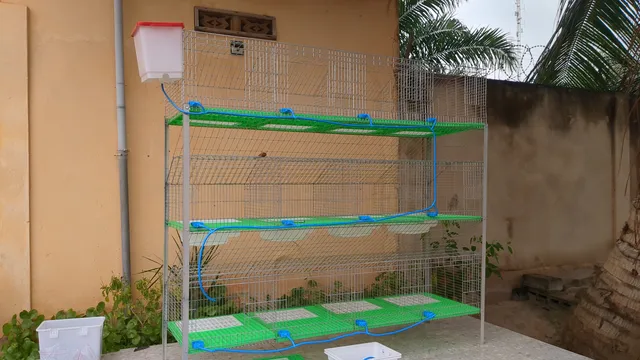Exploring the Benefits of Vertical Feed Mixers in Modern Agriculture
Dec . 11, 2024 03:18 Back to list
Exploring the Benefits of Vertical Feed Mixers in Modern Agriculture
Understanding Vertical Feed Mixers A Comprehensive Overview
In modern agricultural practices, the efficiency of livestock feeding directly influences the productivity of the farm. Among the various tools available to farmers, vertical feed mixers have emerged as a popular and effective solution for mixing and distributing feed. This article aims to delve into the functionality, benefits, and considerations of vertical feed mixers.
What is a Vertical Feed Mixer?
A vertical feed mixer is a piece of equipment designed to mix various feed ingredients uniformly. It typically consists of a vertical chamber where the mixing occurs, along with one or more vertical augers that facilitate the blending process. These mixers can handle a variety of feed types, including silage, grains, and by-products, making them versatile tools for farmers.
How Do Vertical Feed Mixers Work?
The operation of a vertical feed mixer is relatively straightforward. The ingredients are loaded into the mixing chamber, where the vertical augers gradually pull the materials upward and back down, ensuring thorough mixing. The design of the augers allows for gentle mixing, which helps to maintain the nutritional integrity of the feed components. Some models are equipped with weighing systems that enable farmers to measure the exact quantities of each ingredient, ensuring consistency in feed quality.
Benefits of Using Vertical Feed Mixers
1. Uniform Mixing One of the main advantages of vertical feed mixers is their ability to achieve a uniform mix. This consistency helps ensure that all livestock receive a balanced diet, which is crucial for their health and productivity.
2. Improved Nutrient Utilization The proper mixing of feed ingredients enhances nutrient utilization by livestock. This can lead to improved growth rates, increased milk production, and better overall health for the animals.
3. Versatility Vertical feed mixers can handle a diverse range of feed types, making them suitable for various livestock operations, from dairy farms to cattle feedlots. Farmers can mix forage, concentrates, and additives with ease.
4. Space Efficiency Unlike horizontal mixers, vertical feed mixers often take up less space while maintaining a similar capacity. This is particularly beneficial for farms with limited storage and operational areas.
vertical feed mixers

5. Ease of Operation Many vertical feed mixers are designed with user-friendly controls and features, allowing operators to mix feed efficiently and with minimal labor input.
Considerations When Choosing a Vertical Feed Mixer
When selecting a vertical feed mixer, farmers should consider several factors to ensure they are making the best choice for their operation
1. Capacity The size and capacity of the mixer should align with the farm's feeding requirements. It is essential to calculate the average daily feed intake of the livestock and choose a mixer that can handle that volume.
2. Type of Livestock Different types of livestock may require different feed compositions. It's crucial to select a mixer that suits the specific needs of the animals being fed.
3. Material Quality The build quality of the mixer is vital for durability and longevity. Farmers should look for mixers made from high-quality materials that can withstand the rigors of daily use.
4. Maneuverability Depending on the layout of the farm, the ability to maneuver the mixer easily between feed storage areas and feeding sites can significantly affect operational efficiency.
5. Maintenance As with any agricultural equipment, the ease of maintenance is important. Farmers should consider how often they will need to service the mixer and the availability of replacement parts.
Conclusion
Vertical feed mixers play a crucial role in modern livestock management, offering numerous benefits that can enhance farm productivity. By allowing for uniform mixing, improving nutrient utilization, and providing versatility, these mixers can be a valuable investment for any livestock operation. Farmers must carefully evaluate their specific needs and choose the right mixer to ensure optimal performance and efficiency in their feeding practices. With the right equipment, farms can achieve significant improvements in animal health and productivity, leading to increased overall profitability.
-
Automatic Feeding Line System-Pan Feeder Nipple Drinker|Anping County Yize Metal Products Co., Ltd.
NewsJul.29,2025
-
Hot Sale 24 & 18 Door Rabbit Cages - Premium Breeding Solutions
NewsJul.25,2025
-
Automatic Feeding Line System Pan Feeder Nipple Drinker - Anping County Yize Metal Products Co., Ltd.
NewsJul.21,2025
-
Automatic Feeding Line System Pan Feeder Nipple Drinker - Anping County Yize Metal Products Co., Ltd.
NewsJul.21,2025
-
Automatic Feeding Line System - Anping Yize | Precision & Nipple
NewsJul.21,2025
-
Automatic Feeding Line System - Anping Yize | Precision & Nipple
NewsJul.21,2025






